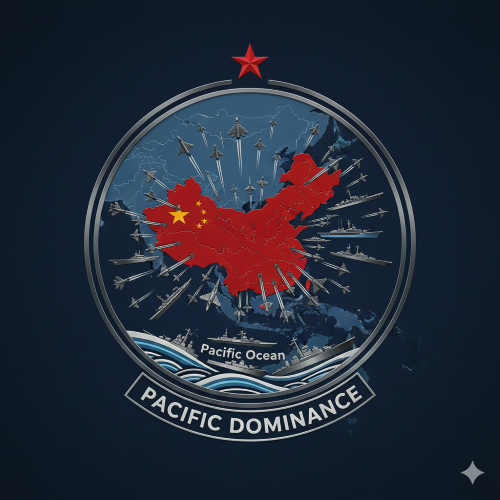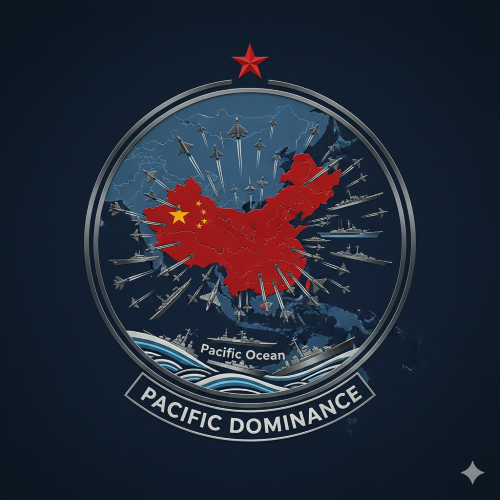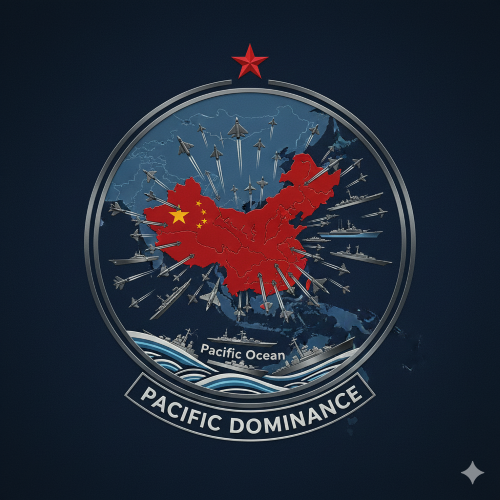Build a strong business with our ready-to-use Gojek clone app. Designed for startups and enterprises with advanced automation, secure architecture, and unmatched customization options. Visit our website for more information: https://whitelabelfox.com/...
#gojekclone #gojekcloneapp #gojekcloneappdevelopment #applikegojek #gojekappclone #gojekclonescript #ondemandbusiness #OnDemandApps #allinoneapp #gojekclonescript #multiservicesapp #ubercloneapp #fooddeliveryapp #GroceryDeliveryApp #ondemandmultiservicesapp

Are the Traditional Checks and Balances—Congress, Courts,...
The American system of government was built on a simple but powerful principle: no single branch should be able to dominate the others. For much of U.S. history, Congress, the courts, and the press operated as institutional counterweights capable of limiting executive power, exposing abuses, and...
https://ubuntusafa.com/posts/422625
Is the Expansion of Executive Authority Becoming a Permanent...
For more than two centuries, American democracy has been defined by a system of checks and balances meant to prevent any branch of government from accumulating unilateral control. Yet over the past several decades—across Republican and Democratic administrations alike—the...
https://ubuntusafa.com/posts/422623
How can the killing of millions in Eastern Congo continue with...
The killing of millions in Eastern Congo continues with almost no meaningful intervention due to a complex web of diverging regional interests, the influence of the conflict mineral economy, severe institutional weaknesses of the African Union (AU) and Southern African Development Community...
https://ubuntusafa.com/posts/422622
Why does the world ignore Sudan despite mass civilian killings,...
The catastrophe unfolding in Sudan, marked by mass civilian killings, widespread ethnic cleansing, and the world's largest displacement crisis—with over 12 million people displaced—is a humanitarian disaster of staggering proportions. The global community's muted response to this...
https://ubuntusafa.com/posts/422620
Why Does the World Stay Silent When China Bullies Asian Countries,...
When a small nation violates international norms—conducting a border provocation, threatening its neighbours, or defying maritime rules—the global reaction is almost immediate. Statements flood in from the United Nations, G7, NATO, and regional blocs. Sanctions are proposed. The...
https://ubuntusafa.com/posts/422616
Should countries collectively sue China for failing to immediately...
The COVID-19 pandemic, originating in Wuhan, China, in late 2019, became one of the deadliest and most economically disruptive events in modern history. Early evidence indicates that Chinese authorities delayed the disclosure of human-to-human transmission, censored whistleblowers, and...
https://ubuntusafa.com/posts/422612
The future of remote work and the African talent revolution.
The Future of Remote Work and the African Talent Revolution- The global workforce is undergoing a profound transformation. Remote work, once a niche or luxury option, has become mainstream, accelerated by the COVID-19 pandemic and advancements in digital communication technologies. For...
https://ubuntusafa.com/posts/422611
Why do talented individuals often leave their home states or...
Tribalisim in African Politics- Why Talented Individuals Often Leave Their Home States or Countries Due to Ethnic Discrimination and Favoritism- Migration of talented individuals — often termed “brain drain” — has become a persistent challenge for many African...
https://ubuntusafa.com/posts/422609https://www.spotnrides.com...
WhatsApp: https://wa.me/919600695595
#UberForTowTrucks #Uberfortowing #TowingService #TowingSoftware #spotntow #TowingDispatchSoftware #TowTruckDispatchSoftware #RoadsideAssistanceSoftware #towtruckmanagementsoftware #TowingBusiness #OnDemandTowing #DigitalTowingSolutions #FleetManagement #TowTruckApp #TowingCompany #TowingStartup #SpotnRides

How Towing Dispatch Software Turns Your Towing Business
Explore this blog to unlock the significant features and aspects of towing dispatch software, along with the right platform for further development.
https://www.spotnrides.com/blog/explore-how-towing-dispatch-software-turns-your-towing-business-into-resonating-success/
What Specific Actions Signal a Shift From Democratic Norms Toward...
Healthy democracies depend on a dispersed structure of power: independent courts, a free press, active citizens, a professional civil service, and strong legislatures. When governments—whether deliberately or gradually—diminish these institutions, power concentrates in the...
https://ubuntusafa.com/posts/422361
Has the Current U.S. Government Crossed the Line Between Strong...
In every democracy, the line between decisive leadership and authoritarian overreach is thin, shifting, and fiercely debated. In the United States—where political polarization has hardened, institutions are under stress, and executive power has expanded for decades—that line has...
https://ubuntusafa.com/posts/422356
Why has the Congo—one of the world’s richest countries...
The Democratic Republic of Congo (DRC) has become the world’s longest-running humanitarian catastrophe despite its immense natural resource wealth due to a devastating and complex interplay of factors, primarily rooted in its colonial legacy, decades of weak governance and corruption, and...
https://ubuntusafa.com/posts/422354
Why is the African Union incapable of stopping two rival generals...
The inability of the African Union (AU) to decisively stop the two rival generals—Abdel Fattah al-Burhan of the Sudanese Armed Forces (SAF) and Mohamed Hamdan Dagalo 'Hemedti' of the Rapid Support Forces (RSF)—from destroying Sudan is a complex failure rooted in a mix of structural...
https://ubuntusafa.com/posts/422353
How did Africa allow Sudan to collapse into a full-scale war...
The collapse of Sudan into a full-scale war between the Sudanese Armed Forces (SAF) and the Rapid Support Forces (RSF) in April 2023, with what appeared to be almost no meaningful mediation, has been a source of significant regional and international concern. While it is inaccurate to say there...
https://ubuntusafa.com/posts/422352
Is China’s Aggression Toward Japan, the Philippines, Taiwan,...
Across Asia, one pattern has become unmistakably clear: China is in conflict, tension, or confrontation with nearly every major regional power. From Japan in the East China Sea, to the Philippines and Vietnam in the South China Sea, to Taiwan across the strait, and India along the Himalayan...
https://ubuntusafa.com/posts/422349
What legal precedents exist for holding a state accountable when...
Legal Precedents for Holding States Accountable for Catastrophic Global Harm- The COVID-19 pandemic sparked urgent questions about state responsibility when government actions—or inactions—contribute to massive loss of life and economic damage. While millions died and...
https://ubuntusafa.com/posts/422348
How Digital Identity Systems Could Transform Governance and Democracy
In the 21st century, governance and democracy are increasingly intertwined with digital technology. From e-government services to online voting, digital tools are reshaping the way citizens interact with their governments. Among these tools, digital identity systems stand out as particularly...
https://ubuntusafa.com/posts/422343
How does nepotism in business and government stifle innovation and...
How Nepotism in Business and Government Stifles Innovation and Entrepreneurship- Nepotism — the favoritism shown to relatives, friends, or close associates in appointments, contracts, or opportunities — has long been recognized as a serious impediment to social and economic...
https://ubuntusafa.com/posts/422342
Can a Nation Claim Progress When Appointments and Contracts Are...
Progress is measured not only by the infrastructure a nation builds or the GDP it achieves, but also by the effectiveness, fairness, and sustainability of its institutions. It is reflected in the competence of its leaders, the integrity of its systems, and the trust of its citizens in...
https://ubuntusafa.com/posts/422341Build your own branded platform where creators can monetize through subscriptions, PPV content, tips, live streaming, and more without starting from scratch.
https://oyelabs.com/onlyfa...
#onlyfansclone #CreatorPlatform #SubscriptionApp #ContentMonetization #oyelabs

OnlyFans Clone | Launch OnlyFans-Style Creator Marketplace
Launch your creator-friendly content subscription platform with our OnlyFans clone script. Modern UI, 100% customizable script loaded with latest features.
https://oyelabs.com/onlyfans-clone/OyeLabs’ Uber-Delivery Clone offers a powerful, ready-to-go solution to connect senders, couriers, and receivers ideal for packages, grocery deliveries, small businesses, and more.
https://oyelabs.com/uber-c...
#DeliveryApp #UberDeliveryClone #OnDemandLogistics #CourierApp #oyelabs

Uber Clone - Build Your Own Online Taxi Booking App
Build your own ride-sharing and taxi booking app with our Uber Clone solution. A customizable, scalable, and secure platform to launch your on-demand transportation business.
https://oyelabs.com/uber-clone/OyeLabs’ UberEats Clone helps you build a custom, ready-to-go food delivery app that connects restaurants, delivery partners, and customers all under your brand name.
https://oyelabs.com/uberea...
#fooddeliveryapp #ubereatsclone #FoodTechStartup #OnDemandDelivery #oyelabs

UberEats Clone App | Launch Online Food Delivery App
Get powerful UberEats Clone App solution with modern features, secure payments, and scalability for your on-demand food business.
https://oyelabs.com/ubereats-clone/Check out: https://www.spotnrides.com...
Whatsapp: https://wa.me/919600695595
#appfortowingservices #OndemandRoadsideAssistanceApp #OnDemandTowTruckApp #TowTruckApp #towtruckapplikeuber #towtruckmanagementsoftware #TowingDispatchSoftware #Uberfortowtruck #uberfortowtruckapp #UberForTowTrucks #Uberfortowing

4 Major Benefits of Having an Uber-like Towing App for Roadside Assistance Business Owners - SpotnRides - AI Powered Taxi Booking App
Your towing app is vital to your roadside assistance business because it will allow your customers to find you easily and in a quick, convenient way.
https://www.spotnrides.com/blog/4-major-benefits-of-having-an-uber-like-towing-app-for-roadside-assistance-business-owners/
Can Asia Truly Prosper When China Constantly Forces Nations to...
Asia is home to some of the world’s fastest-growing economies, most dynamic societies, and most promising futures. From Japan’s high-tech innovation to India’s booming digital economy, from Southeast Asia’s rising middle class to South Korea’s cultural and...
https://ubuntusafa.com/posts/422045
Why Has No Government Pursued Compensation from China for COVID-19...
If millions died and trillions in economic damage were caused, why has no government pursued compensation from China through the International Court of Justice? The COVID-19 pandemic caused unparalleled human and economic devastation. Millions of lives were lost, healthcare systems were...
https://ubuntusafa.com/posts/422043
The Rise of Homegrown African Social Media Platforms: Can They...
In an era dominated by global tech giants like Facebook, Twitter, Instagram, and TikTok, Africa’s digital landscape is experiencing a quiet but significant transformation. Across the continent, homegrown social media platforms are emerging, driven by local entrepreneurs, investors, and...
https://ubuntusafa.com/posts/422042
Are Elections in Nigeria Truly Democratic If Tribal Allegiances...
Democracy, in its truest form, is the governance of a people by their free will — a system where leaders are chosen based on competence, ideas, and vision for collective progress. Yet, in Nigeria, and indeed much of Africa, elections are often less about ideas and more about identity....
https://ubuntusafa.com/posts/422040
What is the impact of tribal favoritism on national security,...
The Impact of Tribal Favoritism on National Security, Policy Implementation, and Social Cohesion- Tribal favoritism — the practice of prioritizing one’s ethnic group in governance, appointments, security structures, and resource allocation — has become one of the most...
https://ubuntusafa.com/posts/422039
Will history judge this era as the moment Nigeria failed to protect...
History is highly likely to judge the current era as the moment Nigeria failed in its most fundamental duty—the protection of its vulnerable citizens. This assessment will be based on the extraordinary duration, scale, and intensity of the violence, coupled with the systemic failure of the...
https://ubuntusafa.com/posts/422038
